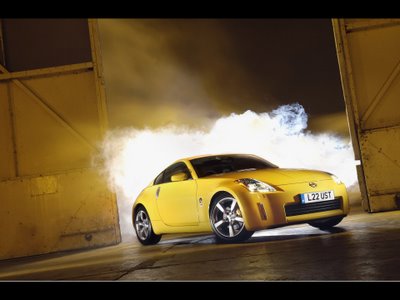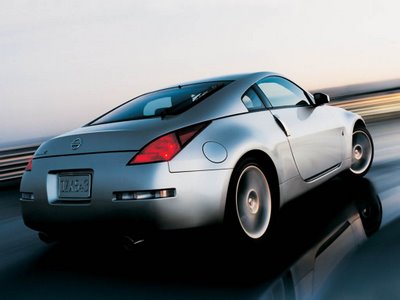Released on August 20, 2002, the 2003 350Z coupé was available in the U.S. in 5 trim packages, including the Base, Enthusiast, Performance, Touring, and Track Editions. In Europe only the Base version and a GT pack were sold. The GT pack had leather seats, uprated Bose stereo system and cruise control over the Base model. Nissan's performance tuning division, Nismo, began producing modified versions of the car shortly after its introduction, although in the UK these were only available one year after the car was launched.
In 2004 Nissan introduced the 350Z roadster featuring an electrically retractable soft-top hood. The car came in 2 trim packages (Enthusiast and Touring)in the U.S. market, and the Base and GT packs in Europe.
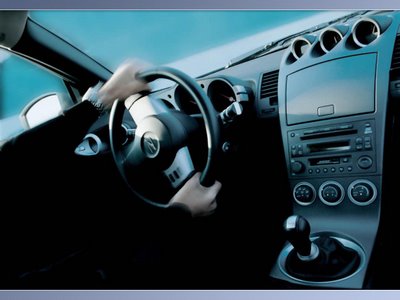
In 2005 Nissan launched a 35th Anniversary edition, which featured options such as "Z" emblems and 5-spoke wheels. The 2005 35th Anniversary edition 6-speed manual and 2005 Track trims both produce 300 hp and 296 torque (224 kW). In addition, The 35th Anniversary and Track 350Z also included revised pistons and camshaft profiles, and a new type of control to the variable valve timing. Although there were increases in power, the changes lead to a decrease in peak torque in the vehicle.
Nissan also added the Grand Touring trim to the Roadster trim packages for 2005. Since the anniversary edition all 6-speed models produce 300 hp / 260 ft·lb (224 kW / 353 N·m).
* Engine: 3.5 L VQ35DE V6 engine
* Output:
o 306 hp (Compared to old rating this new power would equate to 315hp - 320hp ) / ?? ft·lbf (?? N·m) 6-speed manual, 2007 350Z and Infiniti G35 and all 2007 models with 6-speed manual transmission exceot the G35 coupe.
* new output calculations have recently been adopted (Compared to old rating this new power would equate to 315hp - 320hp)
o 300 hp (223 kW) / 260 ft·lbf (352 N·m) 35th Anniversary 6-speed manual, 2005 Track Edition and all 2006 models with 6-speed manual transmission
o 287 hp (214 kW) / 274 ft·lbf (371 N·m) 35th anniversary automatic, all 2006 models with automatic transmission and all other models from 2003 to 2005
* Acceleration: 0 to 60 mph (0 to 100 km/h): 5.3 seconds and the quarter mile (400 m) in 13.6 seconds @ 100 mph / 160 km/h (as tested by Motor Trend)
* Top speed: 156 mph (255 km/h) electronically limited
Nissan Skyline GT-R
Power was delivered to all four wheels using an electronically-controlled all wheel drive system referred to by Nissan as the ATTESA-ETS system. The ATTESA-ETS system uses two G-Sensors mounted underneath the centre console, which feed lateral and longitudinal inputs to the ECU. The ECU would then control the feed of power by allowing a limited amount to be delivered to the front wheels via an electronic torque split converter.
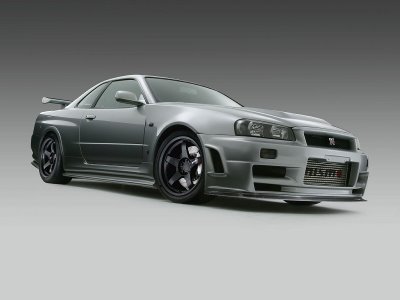
In 1995, the ATTESA-ETS Pro was introduced as an option for R33 GTR customers, and came as standard equipment in GTR V-spec models. It was later standard equipment in all GTR models for the R34 Skyline GTR. The ATTESA-ETS Pro added an Active Limited Slip Differential, which was controlled by the onboard ATTESA computer.
This was only for the rear differential, as the front differential remained as a normal Limited Slip Differential. The ATTESA-ETS Pro was also advertised in brochures as adding an electroniclly controlled 4-channel ABS brake system. Although it is not related to the all wheel drive system, it uses much of the same sensors, and the same computer.
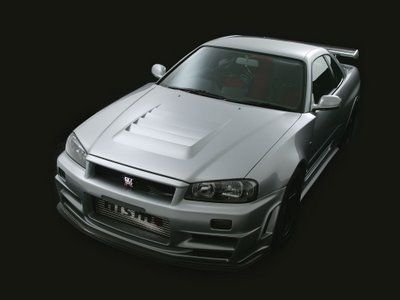
The car also had computer-controlled all wheel steering system referred to as HICAS. The HICAS system activated when the vehicle exceeded 80 km/h and controlled the steering of the rear wheels in the same direction as the front to improve turn in on entry to corners. It should be noted however that this feature is often seen as more of a hindrance then help in race applications.
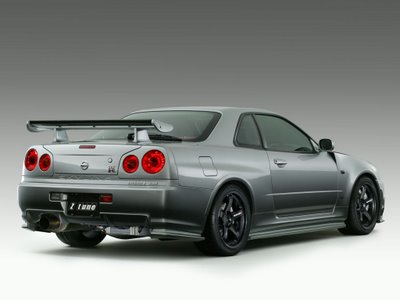
The system tends to favour less advanced drivers, and can make the rear suspension unstable during high speed cornering. For this reason many kits are available to override this system usually by looping it's hydraulic lines back on themselves. This is seen to make the car much more predictable when driving at the limit of grip.
While the published figures from Nissan were as quoted above, practical tests showed the car had a factory power output of closer to 330ps (325hp) at the flywheel. The lower published figure was Nissan's response to the need to abide by a gentleman's agreement between the Japanese auto manufacturers not to release a car to the public exceeding 280ps (276hp) of power output.
Nissan 350Z Video
This article is licensed under the GNU Free Documentation License. It uses material from Wikipedia and Youtube
